Splitboard world
The splitboard is the evolution of the snowboard, taking it back to its roots and its natural habitat. No more snowshoes or DIY solutions for getting to those pristine backcountry lines. It’s one of the fastest growing and evolving sectors in snowsports.
- Author: Ettore Personnettaz
- Photographer: Davide Terenzi
After the much-anticipated return of splitboarding to the pages of the Buyer’s Guide last year, to the delight of our splitboarding readers who got a preview of the best the market has to offer, this year we decided to fully relaunch this section and get into the nitty-gritty of the new equipment out there, differentiating between versatile all-mountain and those designed specifically for powder.
Even more than last year, we realized that the splitboard is no longer a way for snowboarders to access classic touring routes with low vertical and shallow gradients, like it was for the two years following the pandemic. These days an ever-growing number of splitboarders are aiming at mountaineering routes, where you need to carry crampons and an ice axe, and where the descents are challenging and not a little steep. The psychological limit of 1,000 m (3,280 feet) verticals, or the 2 km (just over a mile) walk just to get to the real ascent, has been well and truly overcome. These days riders are ready to take on long distances and aren’t afraid of 2,500 m (4,921 feet) verticals, with a few transitions along the way. Maybe safety knowledge has improved, thanks to more frequent avalanche courses, or it’s possible that physical fitness has become more important in this discipline, as others. But these days it’s no longer an unusual sight to see a splitboard at the top of a 4,000 m (13,000 foot) peak, or on the north face of a big mountain. Or perhaps, and we can’t rule it out, it’s that in terms of construction and development, there’s been a real gear change, led by new players in the field that have gone all in on technology, weight reduction and increasing the overall sturdiness of the board-binding-boot setup.
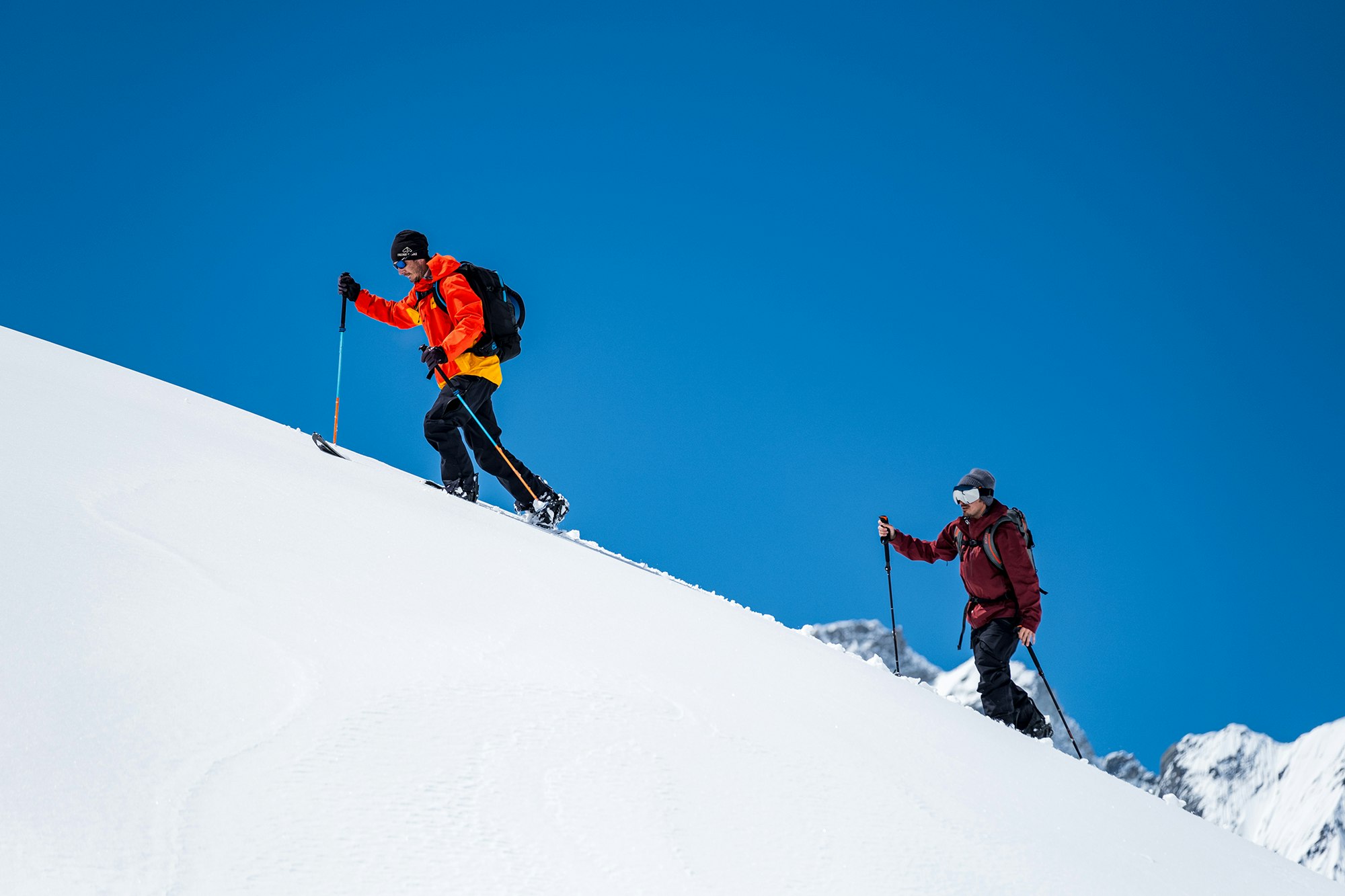
With the introduction of new materials and know-how from the world of skiing, it’s now possible to find a board weighing under 3 kg (6.6 lbs.)—some even arrive at 2.7 kg (a hair under 6 lbs.), or 1,350 g per stick—which is well in line with classic touring skis. The new, well-balanced shapes make kick turns easier and boots are lighter and slimmer, without compromising on the stiffness and stability necessary in ascent. The potential for innovation in this area is much bigger than that for skiing, especially in terms of the durability of materials, which are still pretty delicate and prone to wear (like the binding mechanisms or the durability of lightweight boards). Another interesting, if paradoxical, trend, considering how the climate has been changing in recent years, is the continued increase in powder-oriented models with stub or swallow tail. Obviously an all-rounder would make more sense as a main board, these models are there as backup for big powder days. But then why should skiers get to be the only ones with quivers? There’s a reason if those who spend their days on the snow decide to shell out for a powder/surf-style board; it’s that floaty feeling that only a setback stance can give.
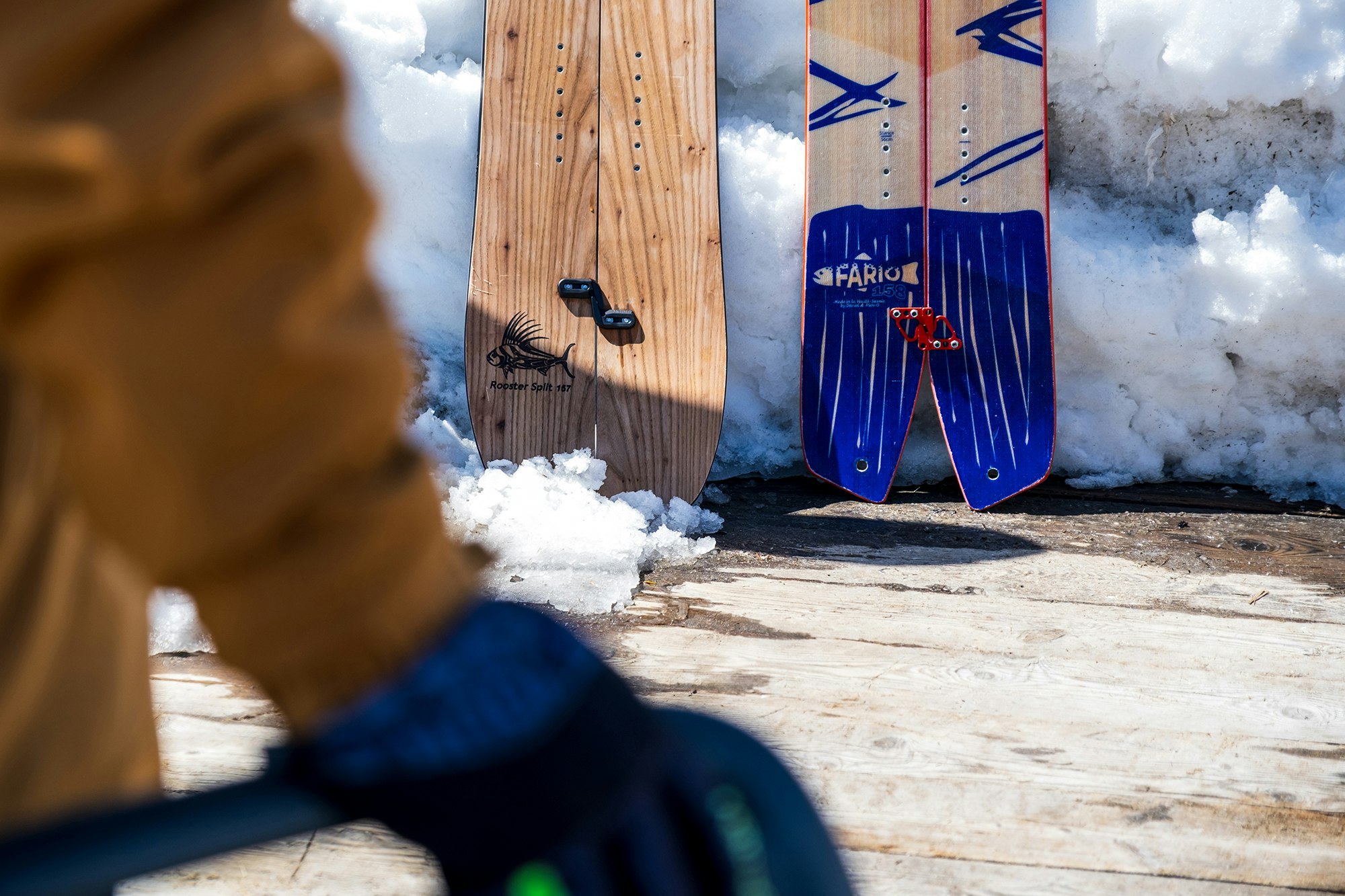
The results of the tests that you will find on the following pages are the fruit of meticulous teamwork on the mountain and the precise combination of various factors. In numbers:
- Six testers were a team of professionals and enthusiasts, including three snowboard instructor trainers, two instructors active on the splitboard scene, and one industry insider from Uainot [pronounced ‘why not’], a specialized snowboard store in Cervinia;
- Eighteen splitboards tested on the slopes of Cervinia and Zermatt over two days, a wide selection of the best on the market:
- Two days on the snow with perfect conditions made it possible to gain the feedback necessary, both in uphill mode and scoping out fresh powder stashes or specific lines in descent.
During the testing for this edition, our overwhelming impression was of the huge work done by brands in the sector to improve and offer products that are increasingly innovative and impressive, from the boards to the bindings, and of course the boots.
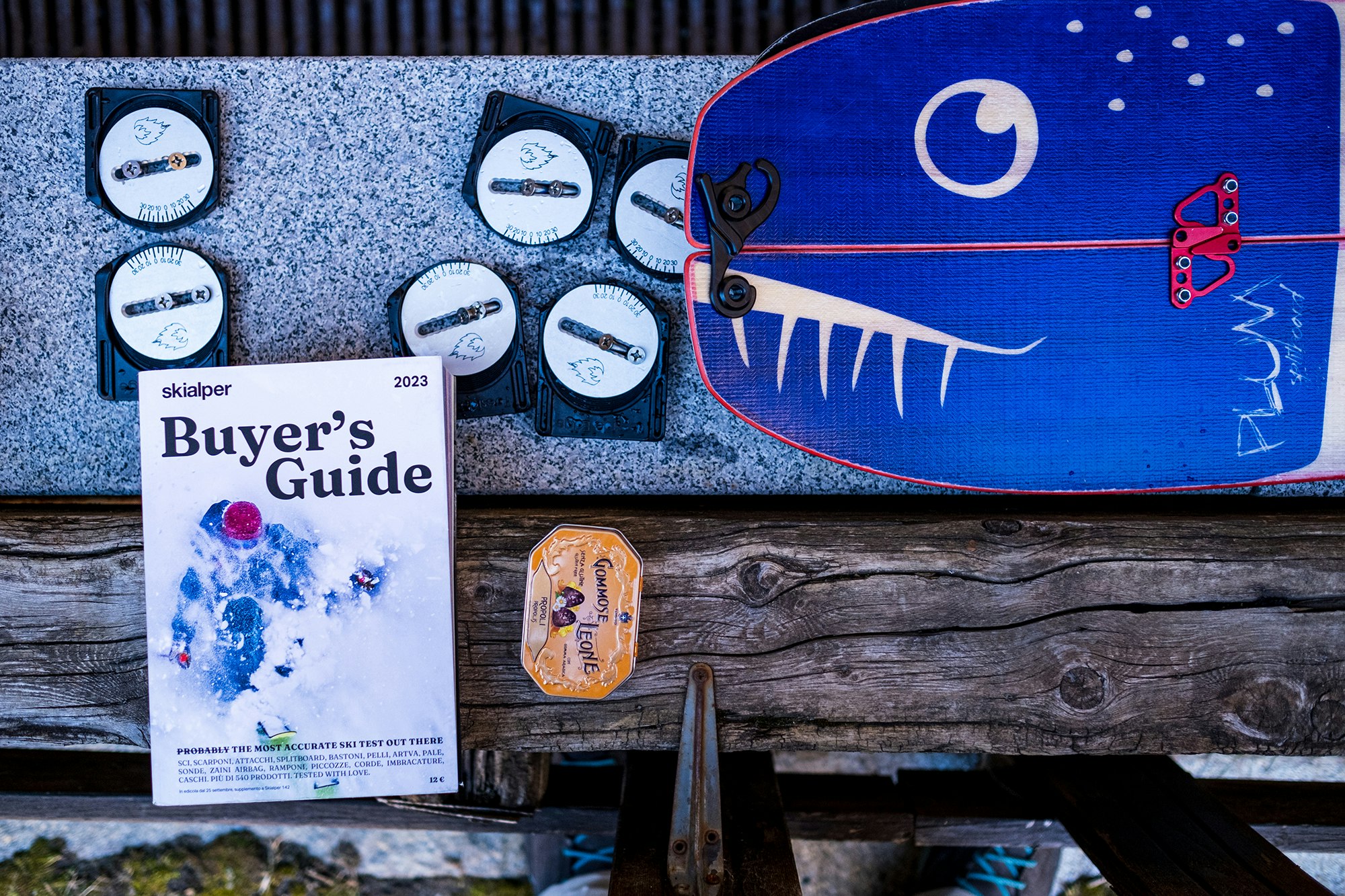
Boards: lightweight, versatile, responsive
Our tests confirmed to us just how far splitboards have come in recent years, with the majority of brands reaching a high level of quality.
We didn’t come across many low-end boards as we chose to focus our efforts on mid-to-high-end models, especially entry-level boards for those just getting into the sport. Generally speaking, the main improvements and innovations have been in weight, versatility and responsiveness, both in ascent and descent. Here in particular you can see a tendency towards good float, with shapes designed for powder, some favoring the swallow tail. The quality of the materials has also seen a big improvement with super fast, durable bases and responsive cores, especially at the higher end, where some models offered astounding performance. And of course we can’t leave out the graphics and design that make these splitboards truly unique.
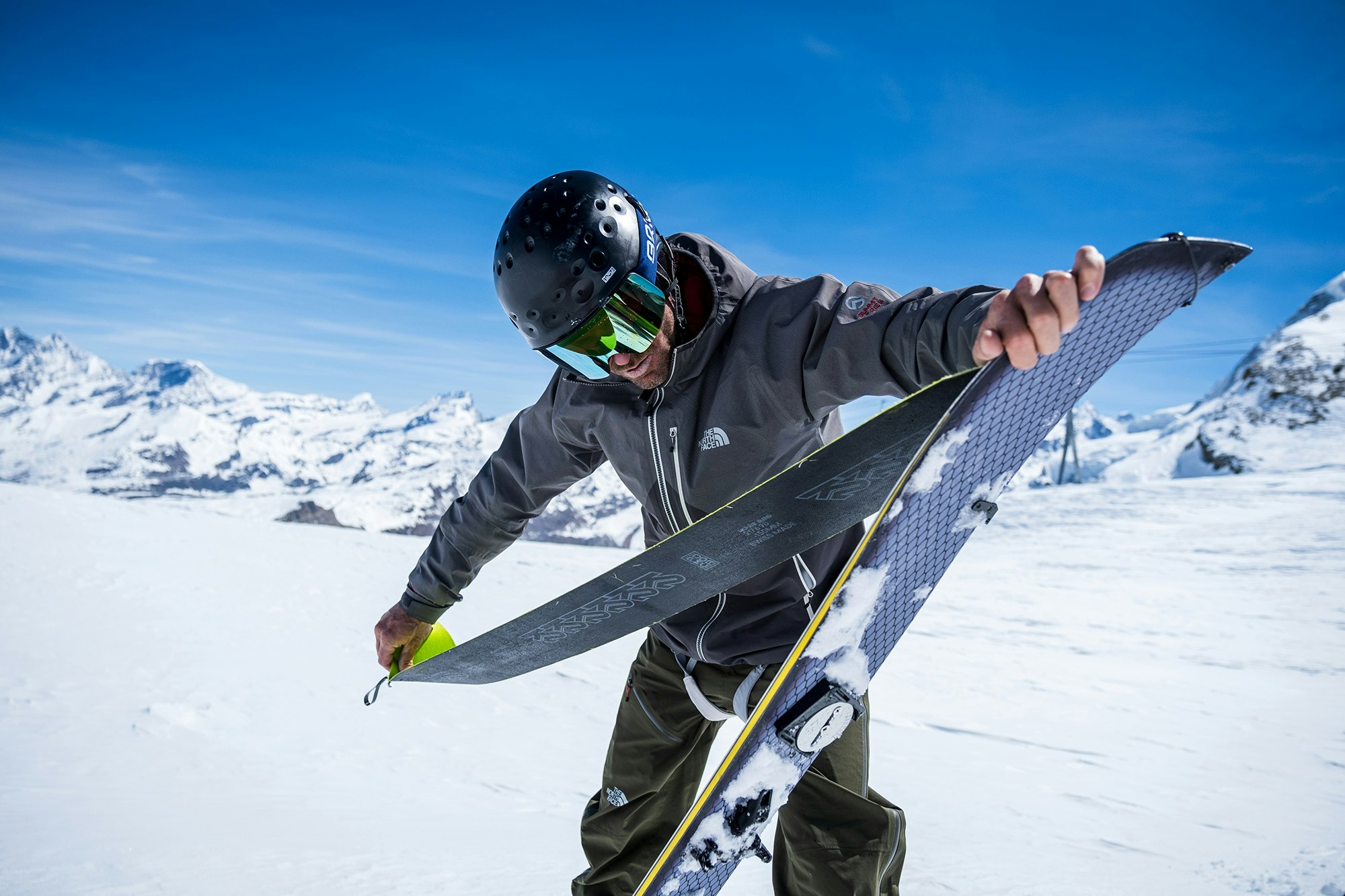
Boots: fit and grip
Your foot has its needs, both in ascent (like good rearward ROM, endurance and grip on traverses, the breathability of the liner), and in terms of fit and support when plowing through powder or ripping steep, technical lines.
The evolution of splitboard boots has reached new highs and overall comfort has increased, even if the models on the following pages vary in concept and construction depending on their level and focus. The Vibram sole dominates and you can find it on almost all models. Its versatility and reliability on challenging high-altitude and often mixed terrain make it a solid choice. Lightweight, comfortable and durable footwear is the way forward.
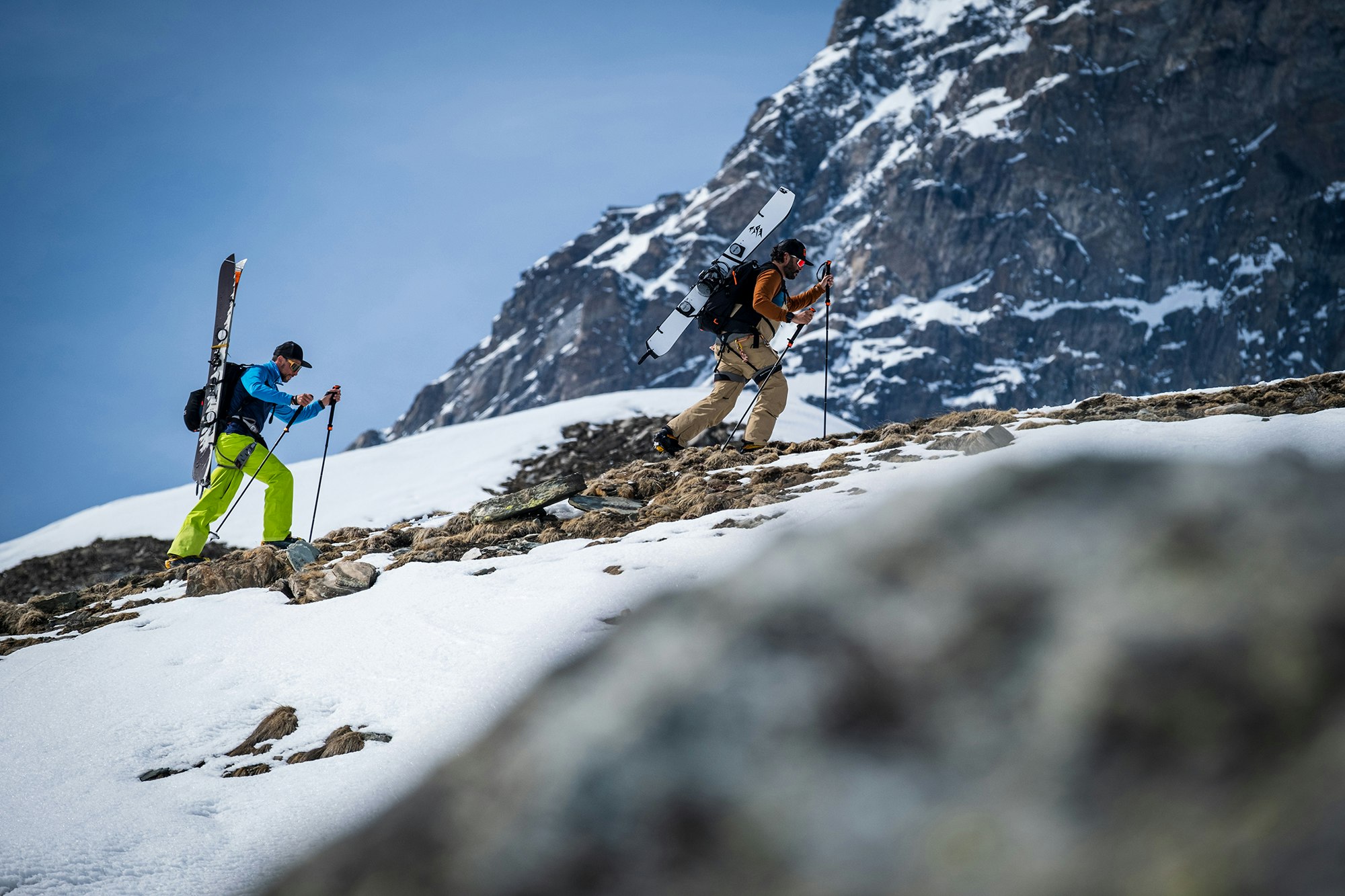
Bindings: increasingly minimalist straps
Here too, the focus of the brands has been on making them lighter and easier to use, especially where straps are concerned.
Some splitboard bindings come close to the comfort of their snowboard siblings, but they still have some way to go in terms of uphill efficiency and going the distance in all kinds of conditions (including high altitudes and ice). On the other hand, those who want big verticals, performance and long distances usually opt for hard boots and bindings. For traditionalists, the main brands have done a lot of work in reducing weight and improving ease of transition through the use of better materials, from the toe pieces to the highbacks and the straps. For all the choice out there, you still need to make compromises depending on what your goals are. There really is a lot to choose from, and the quality on the whole is high.
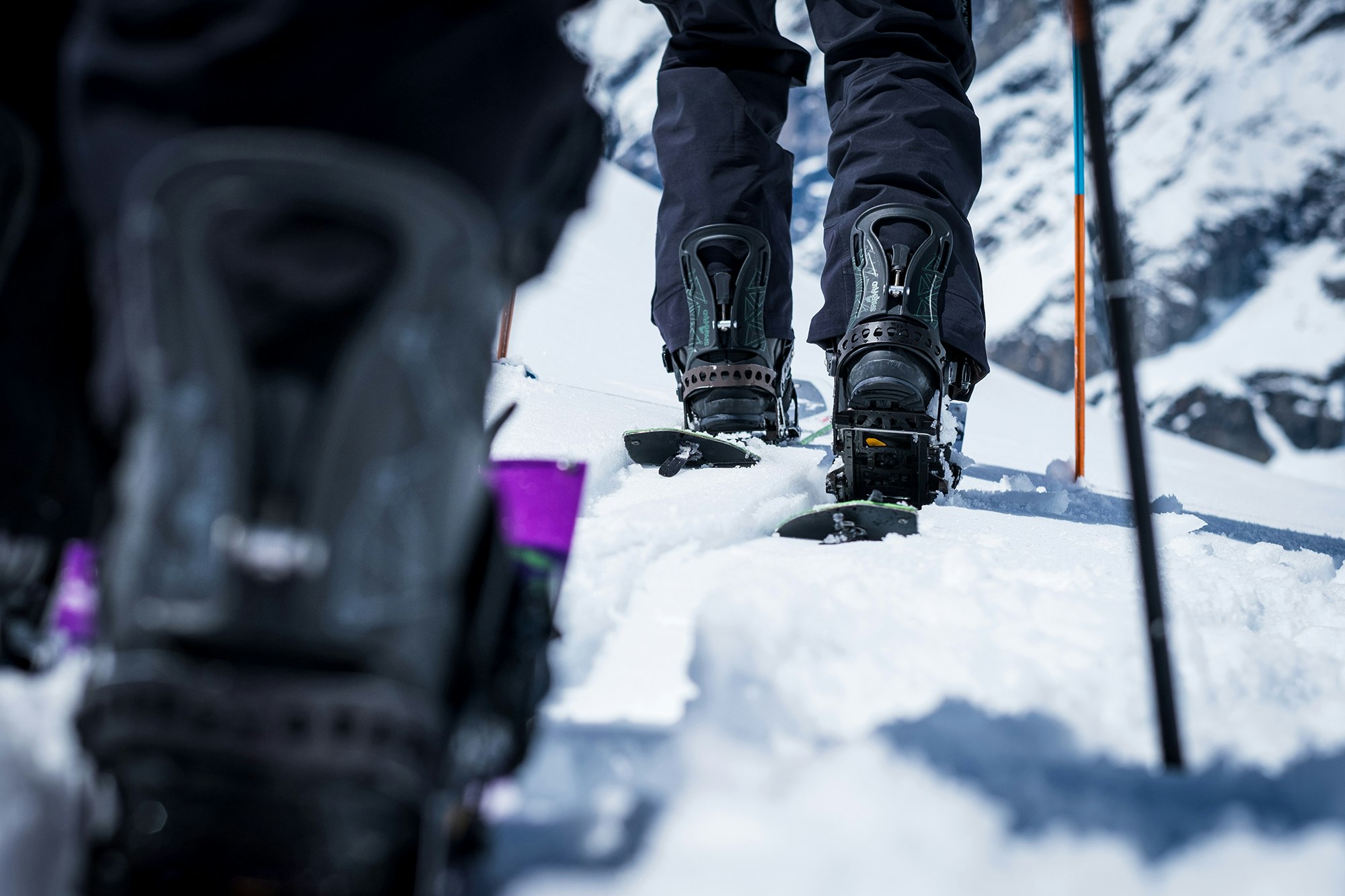
Share this article

